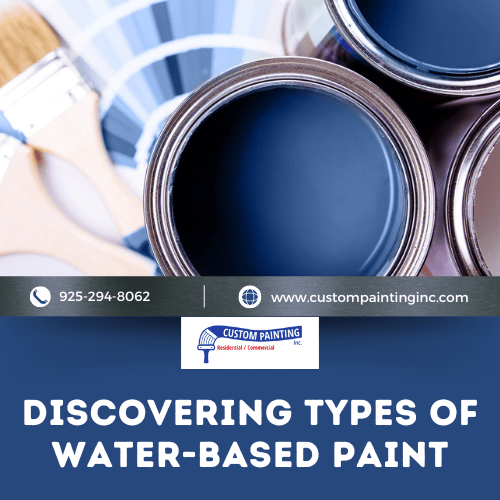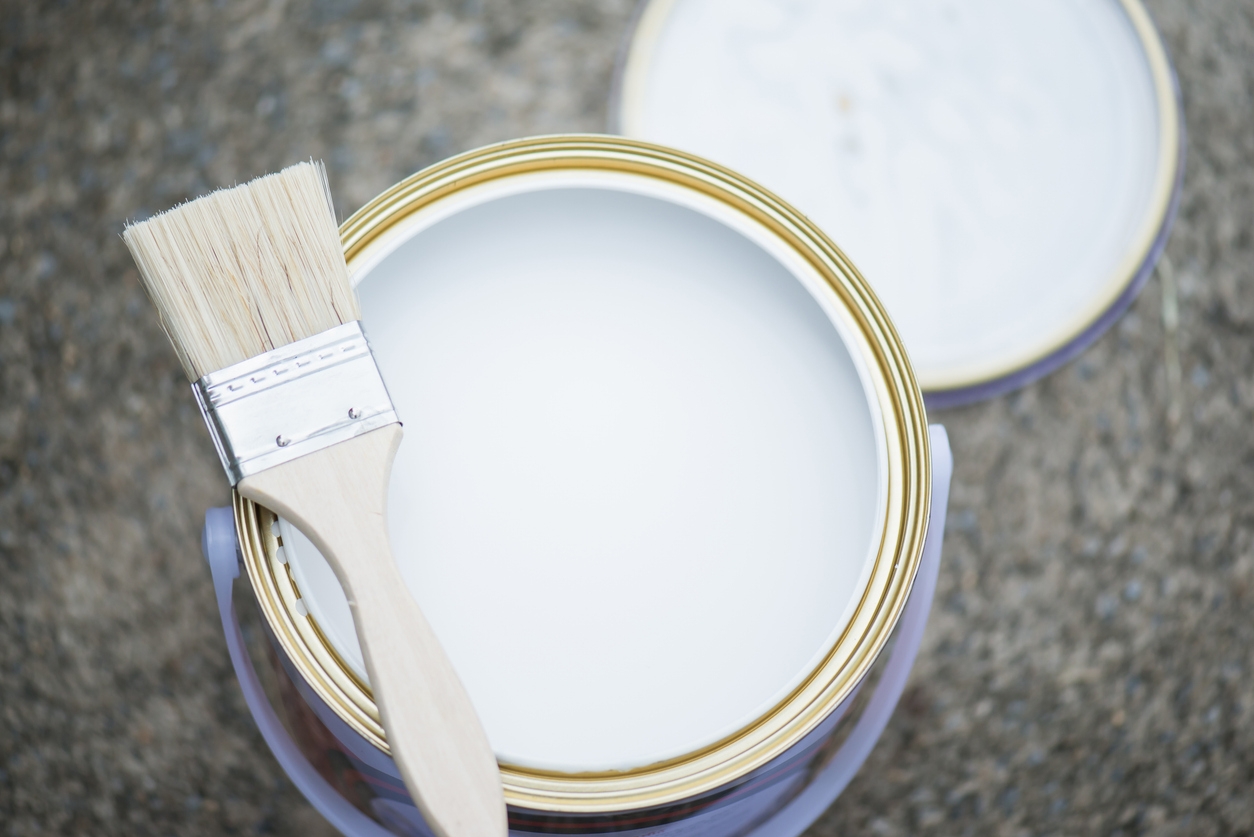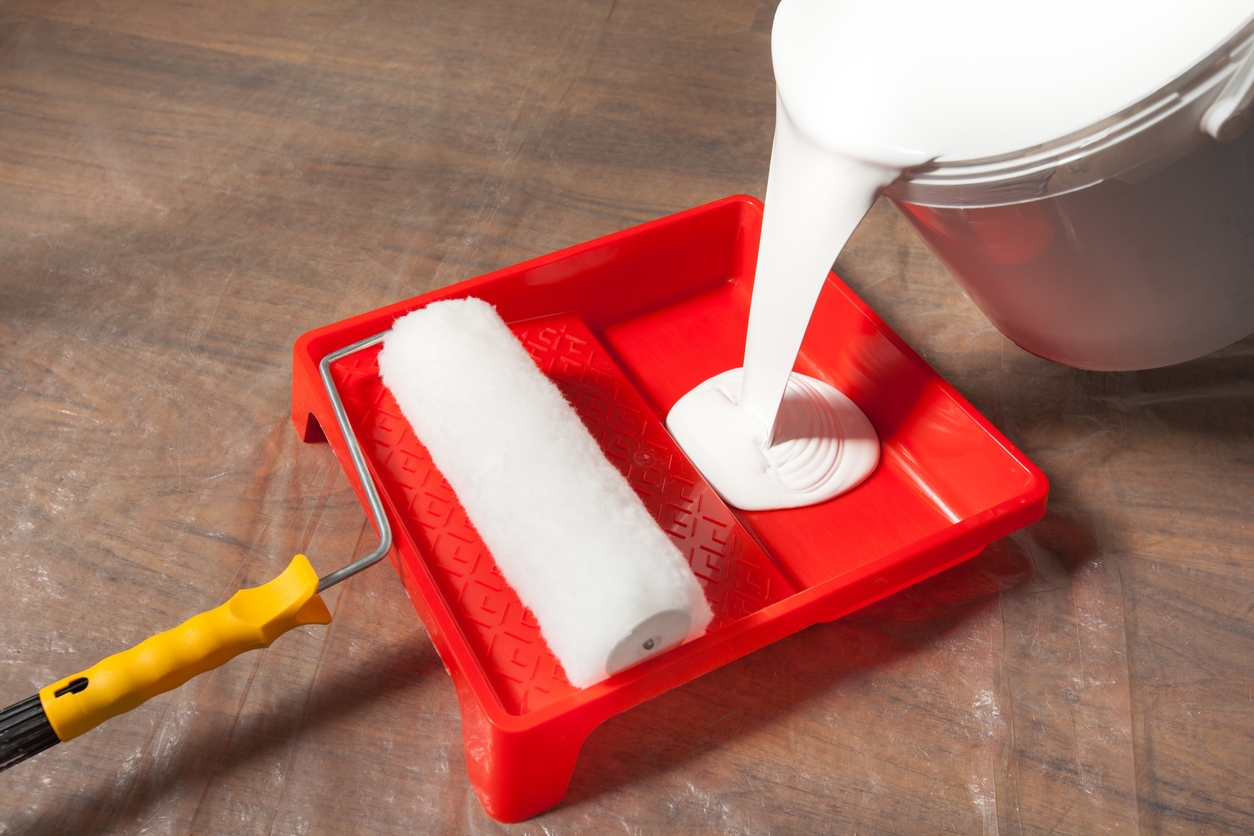Did you know that latex is not the only water-based paint? You might be surprised, but there are other paint types with water as the chief carrier. Water-based paints are popular due to their versatility, ease of use, washability, quick drying time, and minimal environmental impact. They come in various finishes and are suitable for numerous surfaces.
However, not all water-based paints are the same. This is why choosing the correct water-based paint is crucial to ensure durability, proper adhesion, and the desired finish for your project. Selecting the appropriate type of water-based paint can significantly influence the quality and longevity of your work.
What are water-based paints?
Definition and characteristics
Water-based paints, also known as latex or acrylic paints, use water as the primary solvent or carrier for the paint’s pigments and binders. They are versatile and can be used on various surfaces, including walls, ceilings, wood, and metal. These paints are known for their quick drying time, low odor, and easy cleanup with soap and water.
Comparison with oil-based paints
- Drying time: Water-based paints dry significantly faster than oil-based paints, which can take several hours or even days to dry completely.
- Odor and VOCs: Water-based paints emit fewer volatile organic compounds (VOCs), making them less odorous and safer for interior painting than oil-based paints.
- Cleanup: Water-based paints can be easily cleaned with water, while oil-based paints require solvents like turpentine or mineral spirits.
- Durability: Oil-based paints generally offer better durability and a smoother finish, but advancements in water-based paint technology have closed this gap considerably.
Environmental benefits
Water-based paints are more environmentally friendly due to their lower VOC content, which reduces air pollution and health risks. Their production and disposal have a smaller environmental footprint than oil-based paints, which contain harmful chemicals and require more energy-intensive manufacturing processes. Water-based paints’ more convenient cleanup process reduces the need for harsh chemicals.
Types of water-based paints
Acrylic paint
Composition and uses
- Composition: This paint contains pigment suspended or dispersed in an acrylic polymer emulsion. It is water-soluble when wet but becomes water-resistant when dry.
- Uses: It’s widely used in fine arts, crafts, and even some industrial applications. It’s versatile and can be used on canvas, wood, paper, and other surfaces.
Pros and cons
Pros:
- Dries quickly, allowing for layering and fast project completion.
- Durable and resistant to water and light once dry.
- Available in various colors, shades, and finishes.
-
Cons:
- It can dry too quickly, making blending difficult.
- It may become brittle over time.
- Colors may somewhat darken as they dry.
Latex paint
Composition and uses
- Composition: Latex paint, also known as acrylic latex, is water-based and made with acrylic resin. It often includes additives to improve performance.
- Uses: Commonly used for painting walls, ceilings, and other home surfaces. It’s a favorite for both interior and exterior applications.
Pros and cons:
Pros:
- Easy to clean with soap and water.
- Dries quickly, reducing the time between coats.
- Low odor and low VOC options are available, making it environmentally friendly.
-
Cons:
- Less durable than oil-based paints for high-traffic areas.
- It can be difficult to get a smooth finish on certain surfaces.
- It may require more coats for full coverage.
Chalk paint
Composition and uses:
- Composition: Chalk paint contains calcium carbonate, pigment, and water. It has a matte, chalky finish.
- Uses: It is primarily used to give furniture and decorative items a vintage or shabby chic look. It adheres well to most surfaces without the need for extensive preparation.
Pros and cons
Pros:
- It requires little to no surface preparation.
- It can be easily distressed for an antique look.
- Water-based and easy to clean up.
-
Cons:
- It is not as durable as other paints without a protective topcoat.
- Limited color palette compared to other types of paint.
- It can be more expensive than other water-based paints.
Watercolor paint
Composition and uses
- Composition: Watercolor paint consists of finely ground pigments suspended in a water-soluble binder, usually gum Arabic.
- Uses: Primarily used in fine art painting, especially for creating translucent and fluid effects on paper. It is popular in landscape, portrait, and abstract art.
Pros and cons
Pros:
- It allows delicate, transparent layers and subtle color blending.
- Portable and easy to clean up.
- It offers a unique, fluid aesthetic not easily replicated with other mediums.
-
Cons:
- Less forgiving; mistakes can be challenging to correct.
- Colors can fade if not correctly protected from light.
- It requires specific types of paper and tools for best results.
Choosing the correct water-based paint for your project
When choosing water-based paint, consider the following factors to ensure the best results for your project:
Factors to consider
- Surface: Different surfaces require different types of paint. Consider whether you’re painting walls, furniture, or crafts. Each surface may need a specific formulation for optimal adhesion and finish.
- Durability: Durability is the key, especially in high-traffic areas or items that will be handled frequently. Look for paints with good scrub resistance for walls and tougher formulations for furniture.
- Finish: The paint’s finish affects the look and feel of the surface. Usual finishes include matte, satin, semi-gloss, and gloss. Matte is great for hiding imperfections, while gloss provides a shiny, durable finish.
Best uses for each type of paint
- Flat and matte finishes are best for ceilings and low-traffic areas where you want a non-reflective surface.
- Eggshell and satin finishes are ideal for living rooms, bedrooms, and hallways. They offer a balance between durability and a smooth, soft finish.
- Semi-gloss and gloss finishes are suitable for kitchens, bathrooms, trim, and furniture. They provide a shiny finish that’s easy to clean and durable.
Tips for selecting the right paint for different surfaces
- Walls: For most walls, an eggshell or satin finish is recommended due to its balance of durability and aesthetic appeal. For kitchens and bathrooms, consider a semi-gloss finish for easier cleaning.
- Furniture: Choose a durable paint, such as a semi-gloss or gloss finish, which can withstand frequent use. Consider using a primer before painting to ensure better adhesion.
- Crafts: Depending on the material, a satin or gloss finish can work well. For porous materials, use a primer or an all-in-one paint to ensure even coverage.
Considering these factors allows you to select the right water-based paint for any project, ensuring a lasting and beautiful finish.
Application tips and techniques
1. Preparing the surface
- Clean the surface: Ensure the surface is free of dust, dirt, and grease. For previously painted surfaces, lightly sand them to remove gloss and provide a good key for the new paint.
- Repair imperfections: Fill in any cracks or holes with a suitable filler, and sand smooth once dry. If the surface has stains, consider using a stain-blocking primer.
- Prime if necessary: For bare wood, plaster, or if switching from oil-based to water-based paint, apply a primer designed for water-based paints.
2. Tools Needed for Application
- Brushes: Synthetic brushes are best for water-based paints as they hold shape and clean up easily with water.
- Rollers: Use foam or microfiber rollers for smooth finishes on larger areas.
- Paint trays: To hold and distribute the paint evenly on your roller.
- Drop cloths and painter’s tape: To protect surrounding areas and create clean edges.
3. Step-by-step guide for a smooth finish
- Stir the paint: Stir thoroughly to ensure consistent color and texture.
- Cut in edges: Use a brush to paint edges and corners where a roller can’t reach. Work in small sections to avoid overlapping lines.
- Roll on paint: Load your roller evenly and roll the paint on a grid or tray to remove excess. Apply in a “W” or “M” pattern to distribute paint evenly before filling in.
- Feather out: Once the paint is on the surface, lightly roll over it with an unloaded roller to smooth out the finish and avoid roller marks.
- Apply multiple coats: Water-based paints often need 2-3 thin coats. Let each coat dry thoroughly before applying the next.
- Finish edges and detail work: After the main area is done, go back with a brush to touch up any missed spots or fine details.
4. Common mistakes to avoid
- Skipping surface prep: Neglecting to clean and prime can lead to poor adhesion and a patchy finish.
- Overloading the brush or roller: Too much paint can lead to drips and uneven application. Apply thin layers.
- Not allowing proper drying time: Rushing the process can cause smudging and uneven texture. Always follow the manufacturer’s drying time recommendations.
- Painting in the wrong conditions: High humidity or extreme temperatures can affect how water-based paints dry and cure. Paint in a well-ventilated area at moderate temperatures.
Following these tips will help you achieve a professional-looking finish with water-based paints.
Maintaining and caring for water-based paints
Cleaning and storage tips
- Regular cleaning: For surfaces painted with water-based paints, use a soft cloth or sponge with mild soap and water to clean. Don’t use abrasive materials or harsh chemicals that could damage the finish.
- Paint storage: Store any leftover paint in a cool, dry place. Seal the lid tightly to prevent the paint from drying out. Consider transferring the paint to a smaller, airtight container to reduce air exposure for long-term storage.
Touch-up techniques
- Minor repairs: For minor scratches or chips, use a small brush or sponge to apply a thin layer of the same paint. Blend the edges by feathering the paint to match the surrounding area.
- Consistency in color: If the paint has been stored for a while, stir it thoroughly before use to ensure even color and consistency. Test the paint in a small, inconspicuous area to confirm it matches.
Ensuring longevity and durability
- Protect from moisture: While water-based paints are moisture-resistant, excessive exposure can cause damage. Ensure surfaces are properly sealed, especially in areas like kitchens and bathrooms.
- Avoid direct sunlight: Direct and prolonged sunlight exposure can cause fading. Use curtains or blinds to protect painted surfaces from UV rays.
Conclusion
Experiment with water-based paints in your various projects. Their versatility, ease of use, and eco-friendly nature make them a fantastic choice for beginners and professionals. Whether you’re looking to refresh a room, create vibrant artwork, or tackle a new DIY project, water-based paints offer various benefits that enhance your work.
If you’re ready to start your next project or need expert advice, call Custom Painting, Inc. At 925-686-0903 or message our contact page. Our team is here to help you bring your vision to life with the perfect paint solutions.




